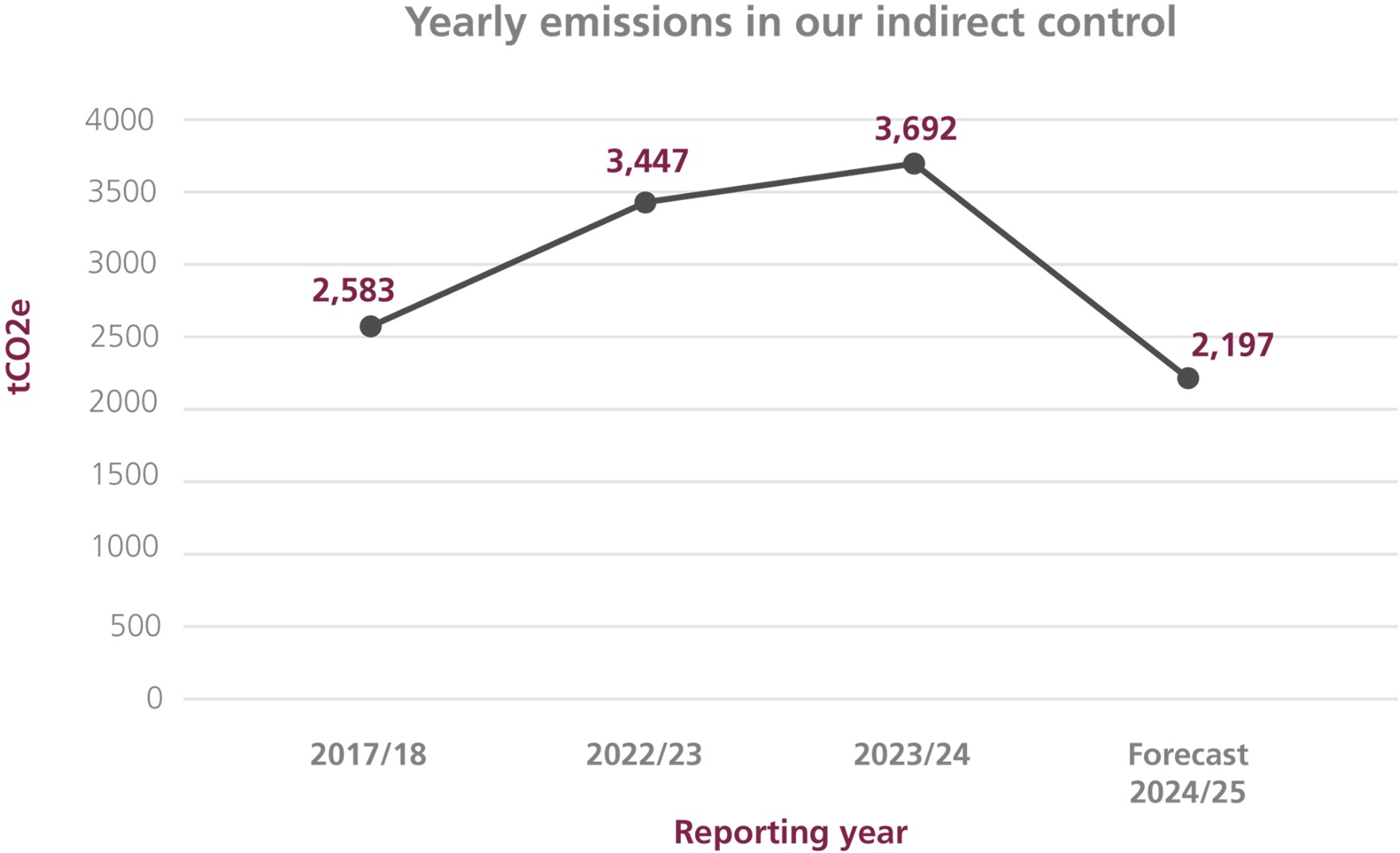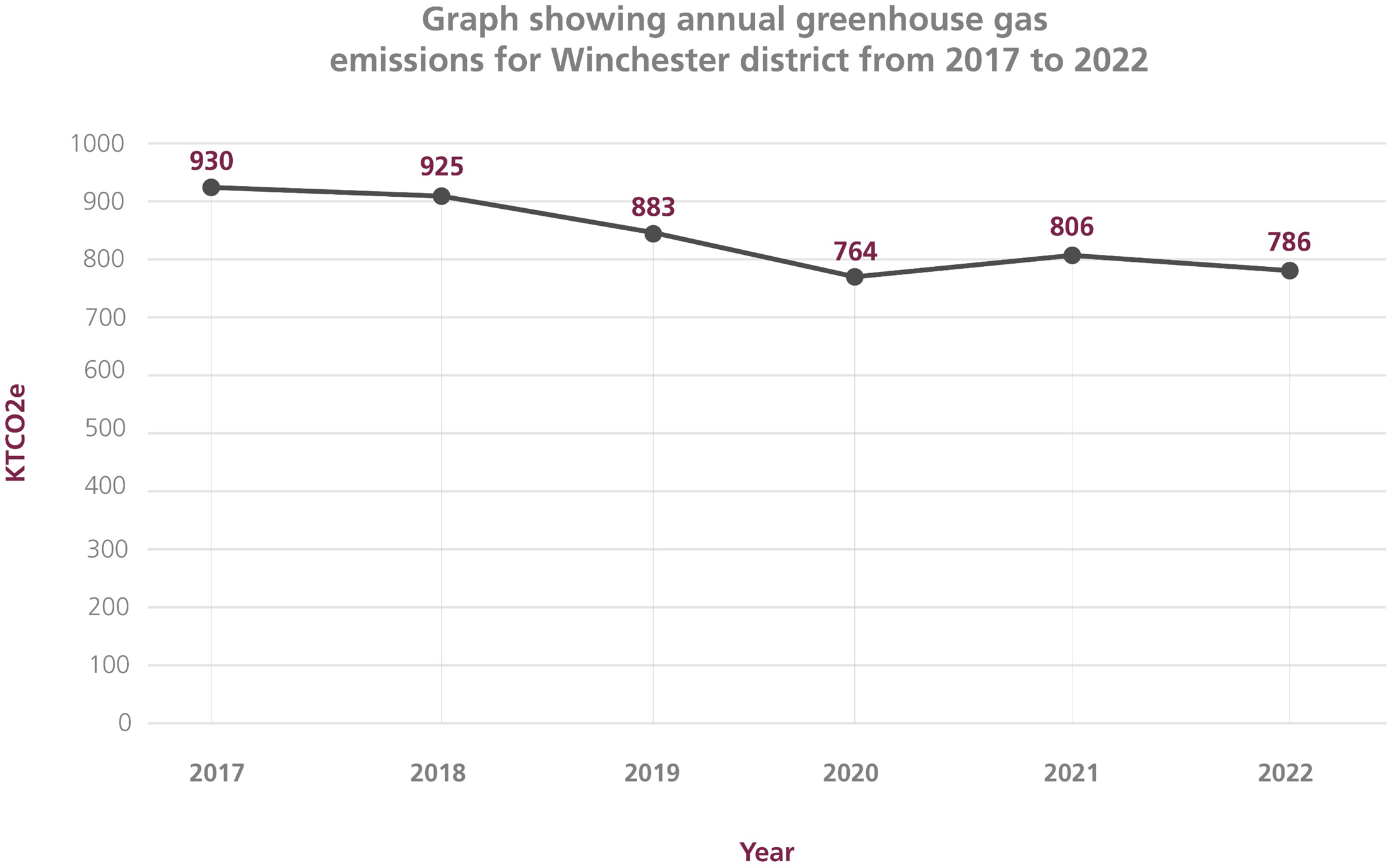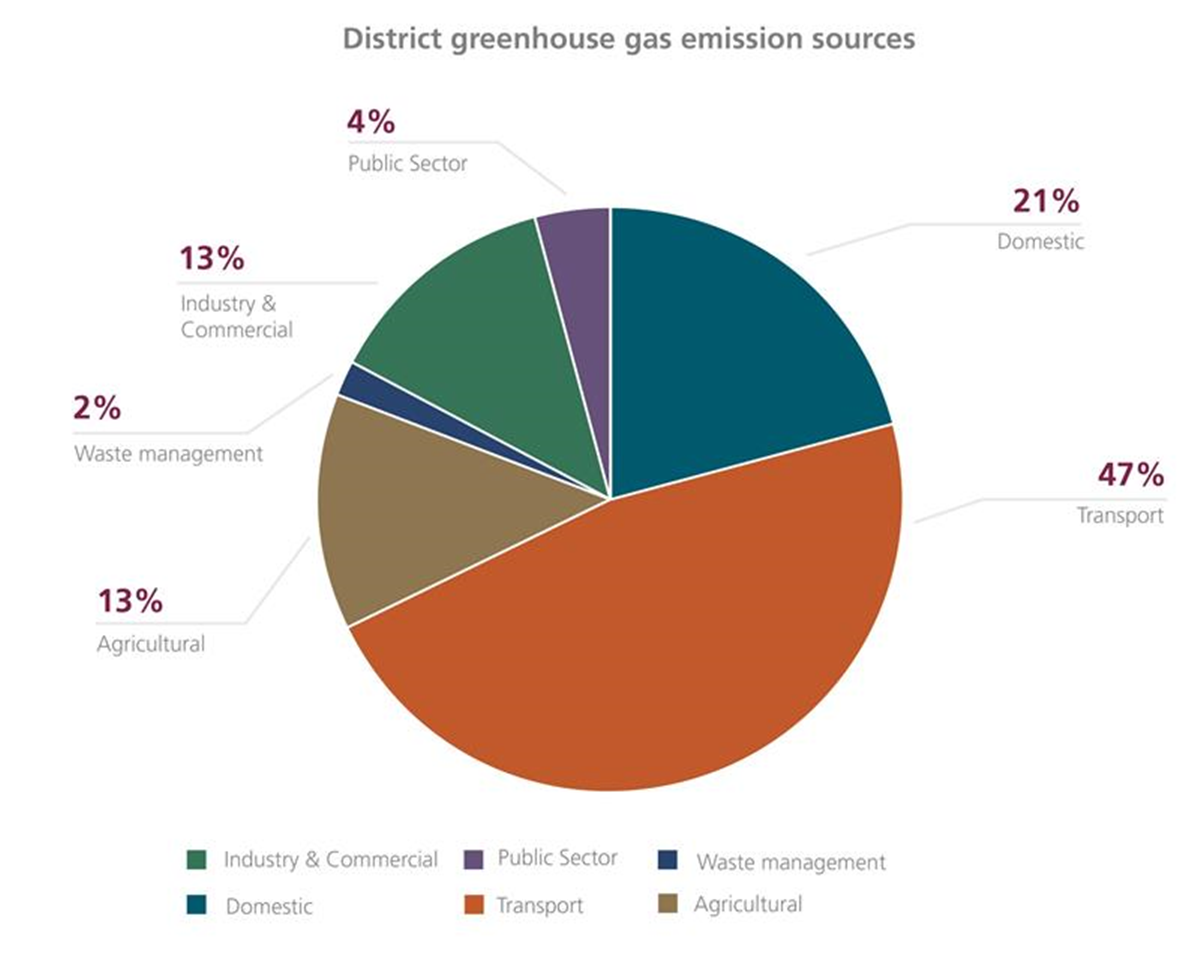Our carbon emissions
In 2019, Winchester City Council declared a Climate Emergency and set challenging targets; to become a carbon neutral council by 2024; and for Winchester district to become carbon neutral by 2030. We measure our progress towards these targets each year, relative to our baseline year 2017/18.
Our Carbon Neutrality Action Plan sets out how we are focusing our efforts and prioritising our actions to achieve these targets.
Council carbon emissions
On an annual basis, the council reports on carbon emissions within our direct control (scope 1 and 2) and indirect control (scope 3). Our carbon footprint reports can be accessed in the documents section of this page.
It is mandatory to report carbon emissions within our direct control, which include carbon emissions from the energy use in our buildings and council owned fleet. Since 2017/18, we have been actively reducing them and our most recent carbon footprint report - 2023/24 - shows that we have reduced these emissions by 76%. By 2024/25 we are forecast to have achieved a 96% reduction in our direct carbon emissions (since the baseline year of 2017/18).
To achieve this substantial reduction in carbon emissions, we have reduced our energy consumption in our buildings, installed solar panels on several of our buildings, switched to a 100% green energy supply and decarbonised our housing fleet by using electric vehicles.
We also report emissions within our indirect control (scope 3); however, this is an optional requirement for local authorities. As an organisation we report on contractor emissions, leisure centres, staff business travel, staff commuting, home working emissions, water and waste. We are projecting to achieve a 40% reduction in emissions within our indirect control by 2024/25, compared to our 2023/24 carbon footprint report. We have achieved this by switching our waste vehicles and Park and Ride buses to low carbon fuel and purchasing green electricity for our leisure centres – Meadowside and Winchester Sport and Leisure Park.

District carbon emissions
Winchester’s district emissions are calculated annually, using data from the Government’s Department for Energy Security and Net Zero (DESNZ).This data is helpfully summarised into a briefing report each year by Winchester Action on the Climate Crisis (WinACC).These briefing reports can be accessed on the right-hand side of the page.
The most recent government data set is from 2022 and shows that the annual greenhouse gas emissions for Winchester district was 786k tCO2e, with transport, housing and businesses responsible for 80% of these emissions. As a council, we have been facilitating and enabling district-wide action and collaboration. This includes retrofitting our own council homes to make them more energy efficient, signposting residents to energy saving grants, and supporting communities and businesses in the district to decarbonise. To find out more and get involved please visit What we're doing - Winchester City Council .


FAQs
